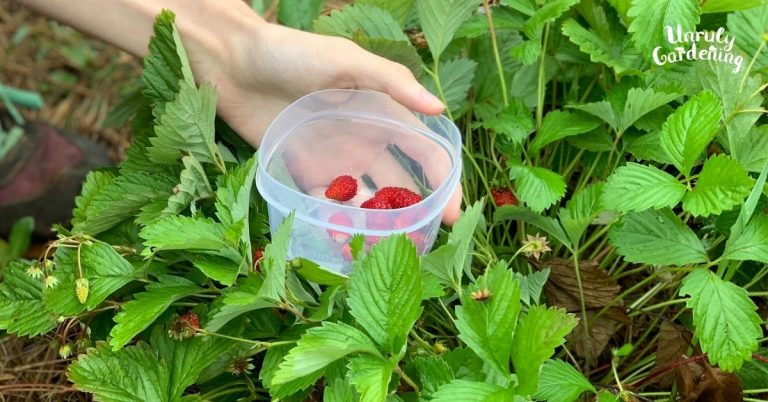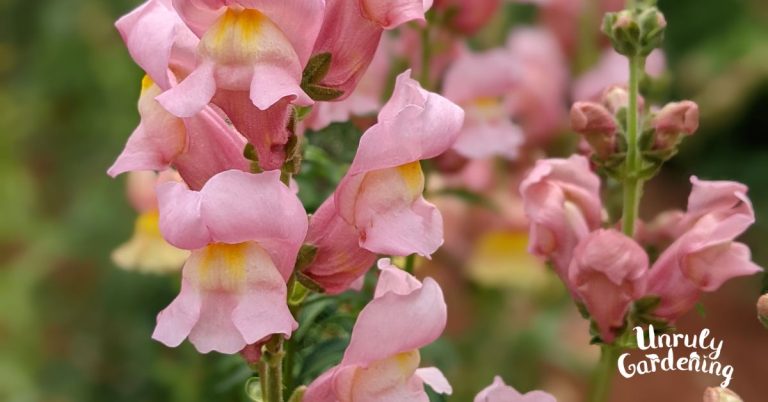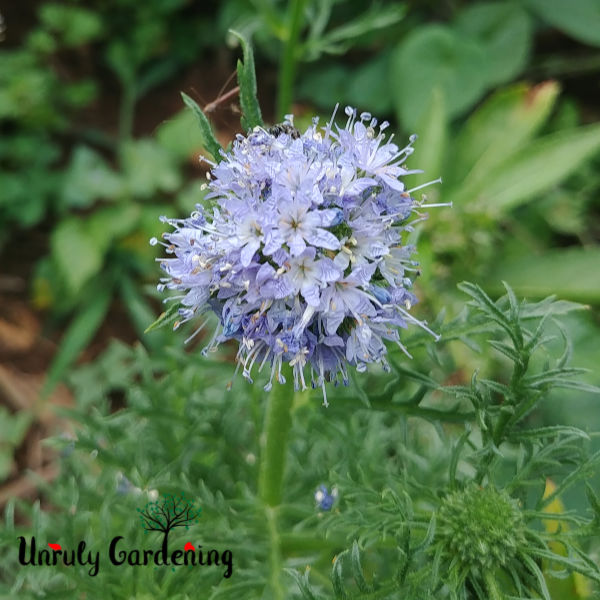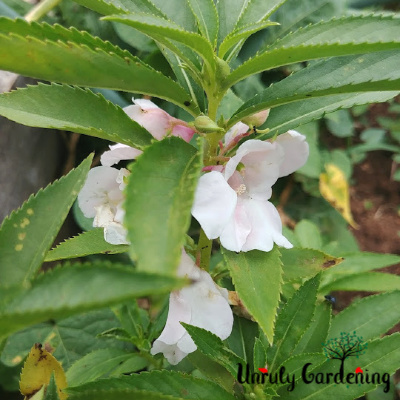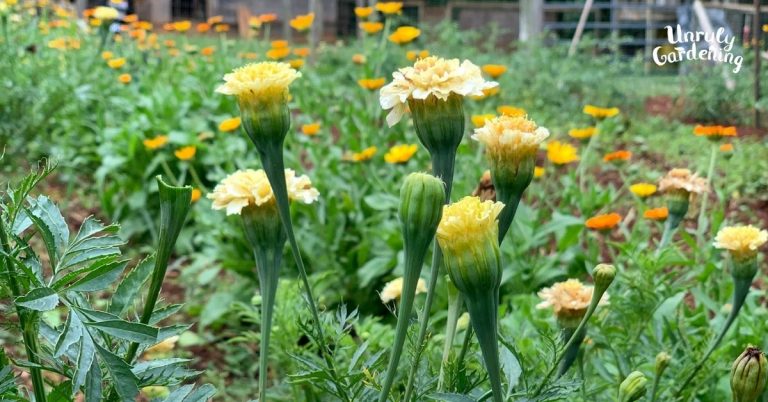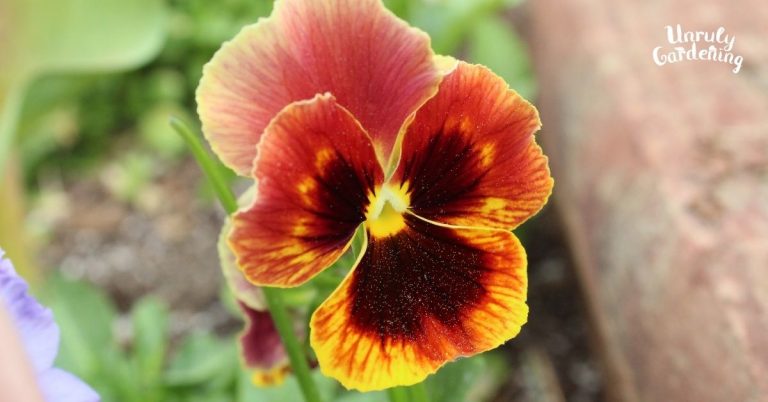How to Grow Sunflowers from Seed
Learn how to plant, grow, and care for sunflowers in your garden!
These cheerful flowers attract bees, butterflies, and other pollinators to your garden, plus provide a food source for birds, small mammals, and humans too!


Growing Sunflowers At a Glance:
Here’s a quick reference list about growing sunflowers. More details can be found in the article below.
Sunflowers (Helianthus annuus) are annual flowering plants.
- Seed size: Large
- Sowing method: Direct sow 1-1½” deep.
- When to start: After all risk of frost has completely passed
- Cold-hardy? No. Will die to frost.
- Sun required: Full sun, 6-8 hours per day
- Spacing: Dwarf to standard sunflowers 12-18″ apart, or giant to tall sunflowers 18-36″ apart
- Estimated days until germination: 1-2 weeks
- Support required: Sometimes, in case of strong winds or heavy heads
- Estimated bloom time: Usually around 3 weeks per flower- staggered sowing (every 3-6 weeks) can result in blooms from summer through fall up until frost
- Bloom colors: Warm tones. Yellow, orange, rust, burgundy, pink, and gold.
- Attractive to pollinators?: Yes! Bees, hummingbirds, and butterflies will all enjoy visiting a sunflower patch.
- Attractive to birds?: Yes! Very much so- many birds are attracted by sunflower seed heads.

So Many Varieties!
Sunflower varieties can vary wildly in height, appearance, petal color, and flower head size.
The average sunflower height for a large number of varieties range around 5-8 feet tall, depending on weather conditions and soil nutrients.
Dwarf varieties can be as short as 2 1/2 to 3 feet, and once a sunflower plant breaks over 10 feet, it’s usually considered a ‘tall’ variety. Tall types of sunflowers tend to range between 10-12 feet tall, though they can potentially reach 15 feet, or even higher!

Some varieties have multiple heads, while others have just the one. Single-headed sunflowers tend to get top-heavy and have a higher risk of breaking, especially if they’re a giant or tall variety. Supportive structures can sometimes help reduce this risk.
Due to this wild ranging in size, plant spacing can vary enormously, depending on variety. Always double check your seed packet for specific planting instructions. Most packets will indicate how far apart to sow seeds.
Video: Growing & Harvesting Sunflower Seeds Slideshow
Here’s a slideshow summarizing this article. (Sometimes an ad plays first, but the video will start right after! The video player won’t show up if you have an adblocker.)

Planting Sunflower Seeds
Sunflower seeds are usually on the large side, and considered easy to sow. Easy enough, in fact, that children often grow them in their first gardens!
Location
Sunflowers are sown directly in worked soil after all risk of frost has passed.
Choose a location that gets full sun (6-8 hours a day), and is somewhat sheltered from strong winds. Sunflowers are prone to being pushed over by heavy wind exposure as they mature. Growing them along a fence-line or a building, for example, can provide shelter and support.

The soil should be well-draining and ideally worked over with a generous amount of compost or a slow-release general granular fertilizer. Soil pH isn’t something to really worry about unless you have highly acidic or extremely alkaline soil. They like being anywhere between a pH of 6.0-7.5, ideally.
Sunflowers aren’t extremely picky about where they grow, but they are heavy feeders. If you notice that your sunflowers seem to be stunted or struggling, try providing extra compost or fertilizer. Alternatively, test your soil, and make sure the area you’re trying to grow them in doesn’t have some kind of contaminant or a pH that needs adjusting.
Seed Sowing
Using your finger to make a hole about 1 to 1 1/2″ deep in the worked soil. Usually people sow 2 sunflower seeds per hole, which allows you to select and thin for the healthiest plants. The seeds are simply dropped in the hole, and then covered up and patted over to firm the soil.

Spacing
As for spacing, dwarf and medium/standard sunflowers are usually sown 6″ apart, and then thinned to 12-18″ after they’ve sprouted and produced a few true leaves.
Tall or giant sunflowers require more space to reach their fullest potential. These flowers are usually thinned to 18-36″ apart. The more space, the better for these giants! If they’re too cramped together, they can prevent each other from reaching their full height or size.
Rows of sunflowers, regardless of size, should be about 30″ apart. You can sow sunflowers every 3-6 weeks, staggering the plantings to try and get continuous blooms.
After everything’s been sown, make sure all seeds are covered. Water well, and keep watering seeds regularly until germination, which usually takes about 1-2 weeks.

Care of Sunflowers
Thin the plants to your desired spacing once they’re a couple weeks old. We use a clean pair of sharp scissors or pruning shears to do this. Simply snip the unwanted seedlings at ground level or as close to it as you can.
Watering
Once sunflowers have managed to germinate and get 2-3 sets of true leaves on them, they become rather hardy. If you are in drought conditions, you may need to water your sunflowers at the base of the plant perhaps once a week or so.
Some people like to water more frequently, but that’s a personal choice to make. Extra watering may possibly effect sunflower height, but avoid constant soaking, which encourages rot.

Support Structures
Very tall sunflowers are surprisingly heavy and run the risk of snapping under their own weight, or being pushed down by the wind. Stakes and wire supports aren’t always helpful, so the best structure to offer them is something like a solid wall or fence to grow against, as it will protect against the wind from one side, and be an unbending structure for the plants to lean on.
This is mostly important for places that get very strong winds. Large sunflowers with heavy heads are at the most risk, while short/dwarf sunflowers are of least concern. This is something to consider when planning out your sunflower garden!

Deadheading
Other than the above tips, there’s just one more thing that’s entirely optional. Multi-headed sunflowers may be capable of blooming for a more prolonged period of time if regularly dead-headed. Simply cut the spent flowerhead off perhaps an inch or so below the head.
Of course, discarded flower heads will not be capable of turning into seeds later, so you’ll have to make a choice: potentially more flowers, or more seeds?

Wildlife
If you live in a place where deer roam around, good deer fencing is unfortunately a must. Deer love sunflowers and will eat the seedlings and the leaves from adult plants. Once they know they’re there, they won’t leave them alone.
A sunflower patch will also attract a large number of beneficial pollinators and other bugs, as well as birds, who like to eat both the bugs and the seeds the sunflowers form! This makes sunflowers a great choice for both pollinator and bird gardens.
There is a nasty little pest called the sunflower beetle which can show up. They defoliate the plants, and can kill seedlings. They have a lot of natural predators, mostly other insects, which usually keep them in check.

After Blooming
Once sunflowers have completely run their flowering course through, the petals and leaves will drop, the seed-heads will start getting heavy, and the stems will begin to turn yellow, and then dry up into a brown, dead stalk.
At the end of the season, most people want these out the garden. Pulling them is less than effective- the roots of a sunflower go deep, and they don’t pull out easy. It’s best to use sharp shears and cut them at ground level.
Some people leave the stalks standing- as hollow stems, they can become winter shelter for beneficial insects. In this case, the dead stalks are left standing all through winter, until warm spring arrives and the insects have had time to vacate. Then, they are removed.
The dead stalks can be composted, but be aware that sunflower stalks are very tough, and take a long time to break down. Especially the big ones! Chop, chip, or otherwise break up the stalks into small pieces before adding to the pile to help things speed up a bit.

What about the seeds?
One of the major reason to grow sunflowers is for its edible seeds. Humans and wildlife alike enjoy them, and there’s a significant amount of them on each and every head – if you can beat the birds to them!
Interested in trying to harvest your own sunflower seeds, but don’t know how?
Check out our article on how to harvest and store homegrown sunflower seeds!

